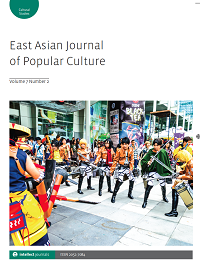
Full text loading...
 , Kelsey E. Scholes1
, Kelsey E. Scholes1 , Jane Simon1
, Jane Simon1
This article examines contemporary representations of sakura (cherry blossom) in cosmetics marketing. Since the Heian period, sakura has been loved and regarded as having tangible and metaphorical significance in Japan. Imagery of sakura is rich in ambiguity and has a complex history as evident in its use in the militaristic promotion of heroism, especially related to the Second World War. However, in recent decades, sakura imagery has proliferated across a range of popular culture both inside and out of Japan. In this article we focus on the circulation and meanings of sakura imagery accessible and appropriated in Australia with specific attention to cosmetics. Sakura offers not only aesthetic pleasure but also potentially some health benefits. Our discussion draws on data from surveys and interviews with participants in Australia about their perspectives of sakura aesthetics related to colour symbolism. This is accompanied by close analysis of colour symbolism in recent perfume, skincare and cosmetic marketing, branding and packaging which use sakura imagery. We argue that, using the complex symbolism associated with the wide colour spectrum, sakura imagery has now been refashioned as a versatile promotional tool in the global market, as exemplified by the brand engagement of sakura-themed cosmetics.

Article metrics loading...

Full text loading...
References


Data & Media loading...

Publication Date:
https://doi.org/10.1386/eapc_00098_1 Published content will be available immediately after check-out or when it is released in case of a pre-order. Please make sure to be logged in to see all available purchase options.